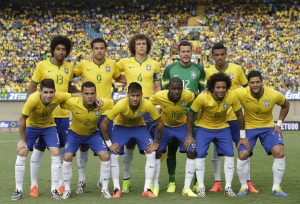My research project will be a study of the lack of environmental control in the present and past within Brazil. I intend to continue on from my History & Culture blog post on deforestation and will bring the building of dams and their harm to river systems into the picture as well. The environmental degradation I find caused by deforestation and dams will be a large portion of my evidence for the lack of environmental control. Additionally, I plan on looking into Brazil’s environmental policies of the past and present to see if any changes have been made.
I want to dig deeper into deforestation than my History & Culture blog post did. I don’t think I was able to get a good idea of how much of the Amazon is missing today in 2018. Rather, I was only able to find the damage ten years ago, and I believe it will be a lot worse now. Additionally, I want to know which industry has caused the most damage to the forest, and why they needed the extra land. Furthermore, I will find evidence of the biological damage in the Amazon that deforestation has caused. Lastly, I want to see what restoration efforts are being made for the forest other than the proposal of planting 73 million trees, which I talked about in my previous post.
Also, I will study Dams because in theory they are a great renewable source of energy through hydraulic power, and have become very popular in most countries throughout the world, including Brazil. However, they act as a barrier between different sections of the river which causes major environmental issues. I intend to find out how many dams have been built on Brazil’s major rivers, and what damage they have caused to them. I indent on finding evidence of biological damage in the river brought forth from the dams.
For the final section of my research project, I will look into the environmental policies of the past in Brazil to see how so much environmental damage was allowed. I will identify the loop-holes Brazilian industry found in these policies. I also think the direct connection between the rate of deforestation and Brazil’s economic status is very significant. This will most likely become a large part of my project as well. Lastly, I will observe Brazil’s current environmental policies to see what changes they have made and if they have been effective.
I believe the lack of environmental control in Brazil is important to the countries history because it is representative of the high abundance corruption that takes place in Brazil, as well as the overall lack of control Brazil’s citizens have on their leaders.
Sources
Fearnside, Philip M. “Soybean Cultivation as a Threat to the Environment in Brazil.” Environmental Conservation, vol. 28, no. 1, 2001, pp. 23–38., doi:10.1017/S0376892901000030.
Butt, N., P. A. de Oliveira, and M. H. Costa (2011), Evidence that deforestation affects the onset of the rainy season in Rondonia, Brazil, J. Geophys. Res., 116, D11120, doi:10.1029/2010JD015174.
Agostinho, A. A., et al. “Dams and the Fish Fauna of the Neotropical Region: Impacts and Management Related to Diversity and Fisheries.” Brazilian Journal of Biology, vol. 68, no. 4, Nov. 2008, pp. 1119–32. SciELO, doi:10.1590/S1519-69842008000500019.
Fearnside, Philip M. “Deforestation in Brazilian Amazonia: History, Rates, and Consequences.” Conservation Biology, vol. 19, no. 3, June 2005, pp. 680–88. Wiley Online Library, doi:10.1111/j.1523-1739.2005.00697.x.
Fearnside, Philip M. “Soybean Cultivation as a Threat to the Environment in Brazil.” Environmental Conservation, vol. 28, no. 1, Mar. 2001, pp. 23–38. Cambridge Core, doi:10.1017/S0376892901000030.
Romig, Bradley S. “Agriculture in Brazil and Its Effect on Deforestation and the Landless Movement: A Government’s Attempt to Balance Agricultural Success and Social Collateral Damage Note.” Drake Journal of Agricultural Law, vol. 11, 2006, pp. 81–106.
Arima, Eugenio Y., et al. “Public Policies Can Reduce Tropical Deforestation: Lessons and Challenges from Brazil.” Land Use Policy, vol. 41, Nov. 2014, pp. 465–73. ScienceDirect, doi:10.1016/j.landusepol.2014.06.026.

